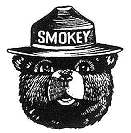United States Department of Agriculture, Forest Service, National Agroforestry Center

United States Department of Agriculture, Forest Service / University of Nebraska-Lincoln: Faculty Publications
Document Type
Article
Date of this Version
2012
Citation
Remote Sens. 2012, 4, 2112-2132; doi:10.3390/rs4072112
Abstract
Remotely sensed imagery provides a useful tool for land managers to assess the extent and severity of post-wildfire salvage logging disturbance. This investigation uses high resolution QuickBird and National Agricultural Imagery Program (NAIP) imagery to map soil exposure after ground-based salvage operations. Three wildfires with varying post-fire salvage activities and variable ground truth data were used to evaluate the utility of remotely sensed imagery for disturbance classification. The Red Eagle Fire in northwestern Montana had intensive ground truthing with GPS-equipment logging equipment to map their travel paths, the Tripod Fire in north central Washington had ground truthed disturbance transects, and the School Fire in southeastern Washington had no salvage-specific ground truthing but pre-and post-salvage images were available. Spectral mixture analysis (SMA) and principle component analysis (PCA) were used to evaluate the imagery. Our results showed that soil exposure (disturbance) was measureable when pre-and post-salvage QuickBird images were compared at one site. At two of the sites, only post-salvage imagery was available, and the soil exposure correlated well to salvage logging equipment disturbance at one site. When ground disturbance transects were compared to NAIP imagery two years after the salvage operation, it was difficult to identify disturbance due to vegetation regrowth. These results indicate that soil exposure (ground disturbance) by salvage operation can be detected with remotely sensed imagery especially if the images are taken less than two years after the salvage operation.

